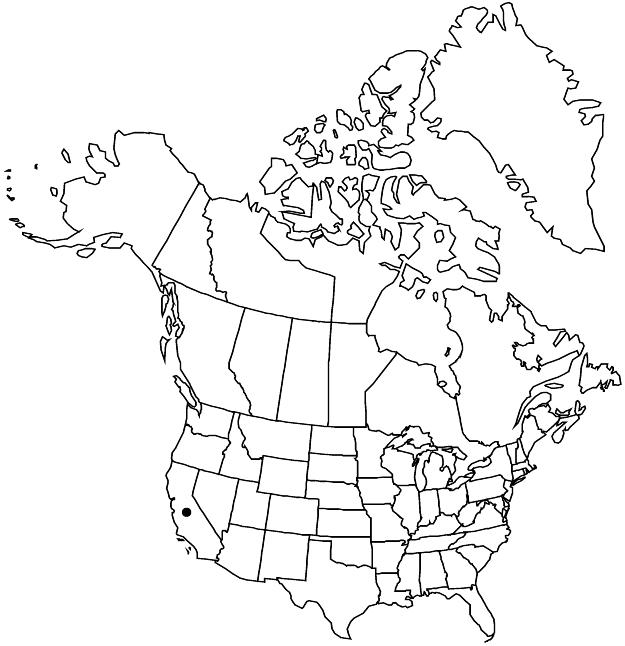Difference between revisions of "Eriogonum thornei"
Harvard Pap. Bot. 3: 51. 1998.
imported>Volume Importer |
GeoffLevin (talk | contribs) m (Corrected spelling of "microtheca" in discussion.) |
||
| Line 41: | Line 41: | ||
|elevation=1800 m | |elevation=1800 m | ||
|distribution=Calif. | |distribution=Calif. | ||
| − | |discussion=<p><i>Eriogonum thornei</i> is known from a single canyon area in the New York Mountains, San Bernardino County. Shultz elevated Thorne’s wild buckwheat to species status when she proposed E. phoeniceum, here considered a variety of <i>E. | + | |discussion=<p><i>Eriogonum thornei</i> is known from a single canyon area in the New York Mountains, San Bernardino County. Shultz elevated Thorne’s wild buckwheat to species status when she proposed E. phoeniceum, here considered a variety of <i>E. microtheca</i>. <i>Eriogonum thornei</i> and <i>E. ericifolium</i> are weakly differentiated, with minimal morphologic differences, and yet they occur on different substrates and are well-removed biogeographically from each other. Thorne’s wild buckwheat is a protected plant in California.</p> |
|tables= | |tables= | ||
|references= | |references= | ||
Latest revision as of 13:07, 12 March 2024
Subshrubs, spreading and matted, not scapose, 0.4–0.8 × 0.4–1(–2.5) dm. Stems spreading, with persistent leaf bases, up to 1/4 height of plant; caudex stems compact; aerial flowering stems spreading, slender, solid, not fistulose, 0.1–0.2 dm, floccose to slightly tomentose. Leaves cauline, 1 per node or fasciculate; petiole 0.01–0.02 cm, tomentose; blade linear, 0.4–0.6 × 0.05–0.1 cm, densely white-tomentose adaxially, finely villous and green adaxially, margins revolute. Inflorescences umbellate-cymose, compact, 0.5–1 × 0.5–1 cm; branches usually dichotomous, otherwise with secondaries suppressed, glabrous or nearly so; bracts 3, scalelike, linear, 0.5–1 mm. Peduncles absent. Involucres 1 per node, turbinate, 1.5–2 × 1–1.5 mm, floccose; teeth 5, erect, 0.4–0.6 mm. Flowers 1.5–2 mm; perianth white, glabrous; tepals connate proximal 1/4, dimorphic, those of outer whorl obovate, 1–1.5 mm wide, those of inner whorl oblanceolate, 0.8–1 mm wide, connate proximally; stamens slightly exserted, 2–3 mm; filaments pilose proximally. Achenes light brown, 2–2.5 mm, glabrous except for papillate beak.
Phenology: Flowering May–Jul.
Habitat: Copper-rich quartzite gravel on ridges, pinyon woodlands
Elevation: 1800 m
Discussion
Eriogonum thornei is known from a single canyon area in the New York Mountains, San Bernardino County. Shultz elevated Thorne’s wild buckwheat to species status when she proposed E. phoeniceum, here considered a variety of E. microtheca. Eriogonum thornei and E. ericifolium are weakly differentiated, with minimal morphologic differences, and yet they occur on different substrates and are well-removed biogeographically from each other. Thorne’s wild buckwheat is a protected plant in California.
Selected References
None.
